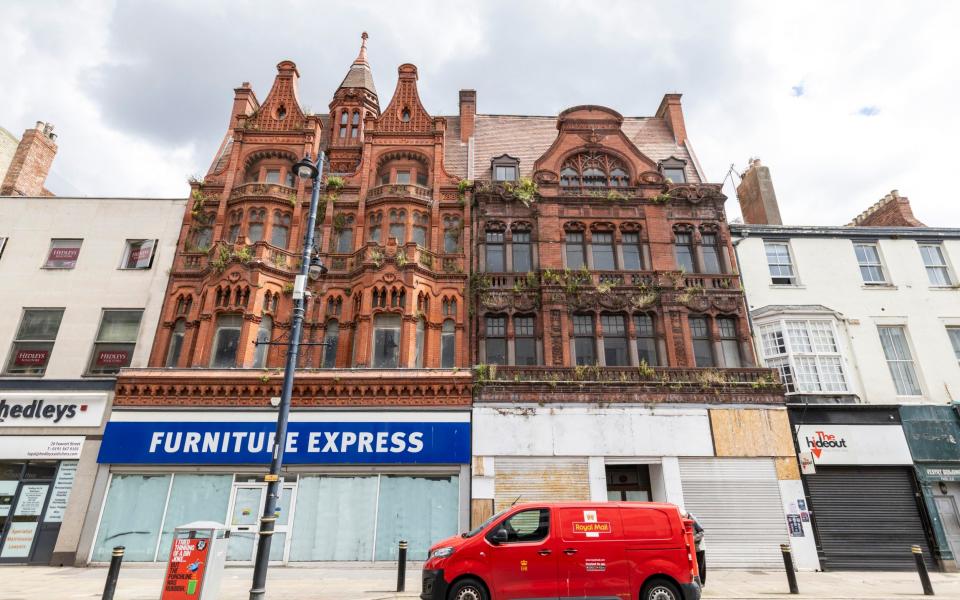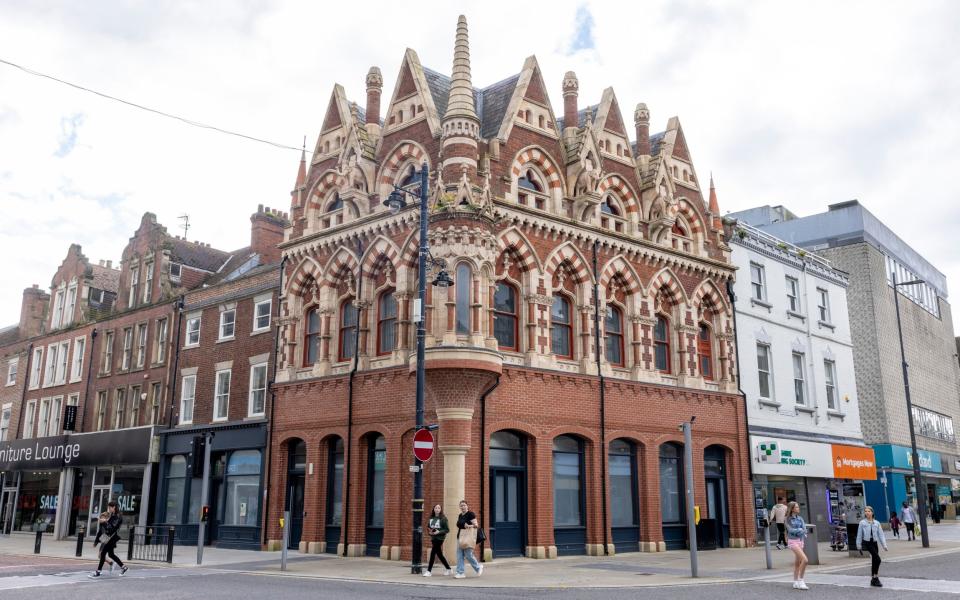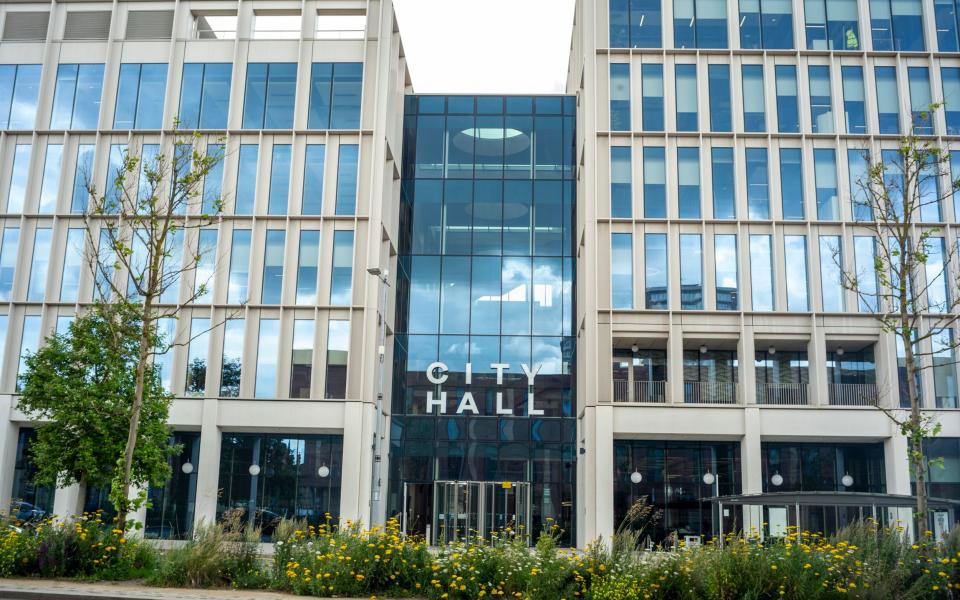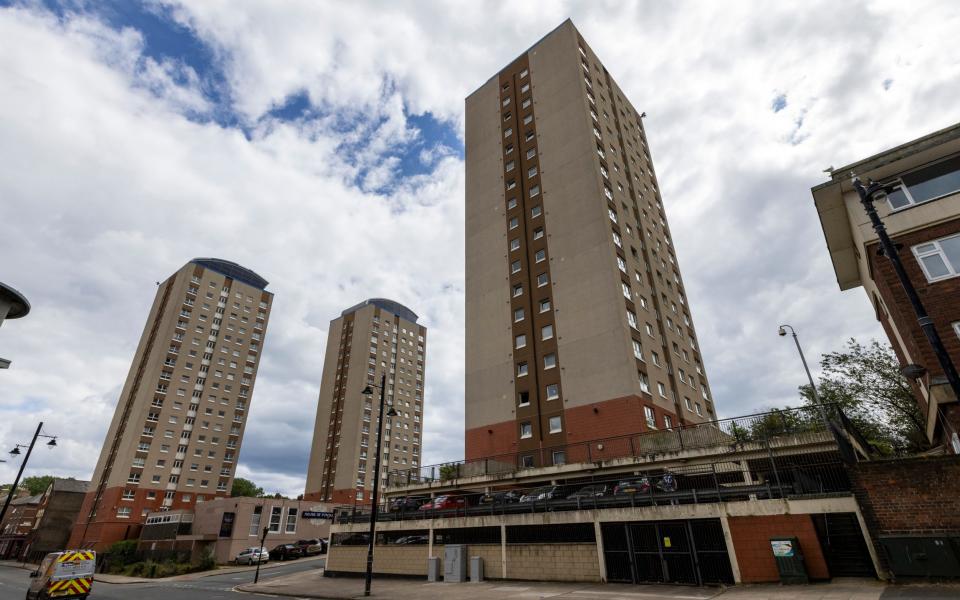Christopher Howse travels the country talking to locals about their high street. How it’s changed and what they miss… This week Christopher visited Sunderland before the chaos that has gripped it in recent days. Here’s his take on the high street in one of Britain’s most deprived areas.
As I walked out of Sunderland’s new railway station, a man sat on a shiny stone surrounded by bushes and shouted, “F––– off! F––– off!” It wasn’t that he recognised me. He was having an endless argument with another drunken man in the summer drizzle.
I was there on the eve of the riots that I didn’t know were happening – although I wasn’t surprised when they happened. My exploration of Sunderland’s high street was a mixture of horror and admiration. I didn’t like much of what I saw, but at first glance I didn’t understand what I was seeing. I had to find out what had come before.
Take the train station. A modest glass entrance to the national rail network and Newcastle Underground opened last year, replacing makeshift arrangements put in place when the old station was bombed in 1943. It was within sight of the new station – between the police station and an amusement arcade – that the Citizens Advice building burned down last Friday.
The tube reaches Newcastle in half an hour; it takes an hour to reach historic Durham, 12 miles away on the River Wear. So I had a night in Newcastle. The cheerful woman at reception asked: “Are you doing anything fun tomorrow?”
“Well, I’m going to Sunderland. Is that fun?
“No,” she replied.
Sunderland, long after coal and shipbuilding failed, is not prosperous. Last year, 42,700 people, or 24.8 per cent of 16-64 year-olds, were “economically inactive” and not looking for work. That is worse than the North East average and even worse than the 21.2 per cent average for Britain as a whole.
Another way to judge is impressionistically. At the bus stop outside a broken window in the Sir William Johnson pub (Wetherspoons), the people waiting looked miserable. Their clothes were poor: faded fleeces, discoloured jogging bottoms, dirty trainers. Women’s hair was pulled back in little ponytails, or frizzy and tangled. Sores were growing from lips. People looked tired. Mothers were shouting at children.
I walked to the high street via Fawcett Street, past a large branch of Wilko, now closed. This was once Binns, a department store and flagship of a chain in the north-east. “Shop at Binns,” the trams said. People did, until it was taken over by House of Fraser and closed in 1993.

Besides Binns, Sunderland suffered a loss that still burns in many hearts: the Town Hall, opened in 1900 with a soaring Baroque clock tower. In 1970 Sunderland Council built new offices a quarter mile away in a Civic Centre opened by Princess Margaret. It gave developers permission for a hotel on the site of the old Town Hall, which was demolished in February 1971.
But the hotel project failed. Virgin Money, a nail salon and a modest post office occupy the site. As for the Civic Centre, maintenance has proven expensive and demolition is set to begin in 2022.
Across Fawcett Street stands a strange symbol of Sunderland’s civic pride and decay. The ornate five-storey red terracotta Corder House has balconies, pointed-cornered windows and a conical roof. It was the work of local architect Frank Caws in 1890. Now its red façade is festooned with green weeds and yellow flowers. Ragwort, I think. On the ground floor, a striking blue plastic fascia reads Furniture Express, permanently closed.


At the top of Fawcett Street the long High Street runs from west to east. It was a kind of tie-beam that held Sunderland together. On the north side of the Wear still stands St Peter’s Church, built in 674 AD. That is Monkwearmouth. Here, south of the river, Bishopwearmouth belonged to the Bishop of Durham. The High Street connected it to the old port of Sunderland.
A jubilant fantasy in which Fawcett Street intersects with the High Street is also by Frank Caws, from 1873 – the Elephant Tea Rooms, in endearing “pub Gothic with Hindu accents”. The accents are stone elephants with tea chests on their backs. In a recent restoration, their trunks were repaired.


I found High Street West packed with stalls for a food festival. Normally it’s a string of pedestrianised chain stores: McDonald’s, Poundland, Sports Direct, a large Primark. Marks and Spencer closed in May. The council stepped in to buy the closed Mothercare and Argos, but it can’t just make shopping centres successful.
On the corner of the new Keel Square, the baroque Edwardian Churchill entrance, originally from the public baths, has been preserved and is attached to the postmodern Gilbridge House office building.
It is adjacent to the large Vaux Brewery site, which closed in 1999, was demolished and earmarked by the council for redevelopment in partnership with Carillion. However, Carillion went into administration in 2018. The council has since built £42m of offices here on the ring road, replacing those in the Civic Centre.


Walking east along the High Street towards the old North Sea docks is a disorienting experience on the surface, but a historical puzzle underneath. Once past the remnants of proud Victorian commerce, I came across Sunderland Bowl, a bowling alley built in 2009. It presents “lifeless façades without articulation”, in the words of Pevsner’s book on Co Durham, revised by Martin Roberts. Across the way, the back of the telephone exchange backs onto the High Street, inaccessible and dirty, “as welcome as an inconvenient telephone call”.
Then the shops give up. The last is the sun-bleached Polish Delicious Food. Further on are acres of grass where buildings once stood. An uncomfortable emptiness is the feeling. High Street Tyres is emblematic, a Victorian terraced house, closed and shuttered, the upper floors boarded up.
Anything left here from the 19th century is welcome. Numbers 170 to 175, from around 1800, once neglected and grassed over, have now been refurbished. Two years ago, a social enterprise set up the Pop Recs music venue here, which also sells “Still Hate Thatcher” T-shirts.
The High Street continues into the East End beyond the Great Wall of the Ring Road. Past the Salvation Army hostel is the Eagle pub, a fine Victorian establishment until 1920. A large carved eagle on the façade has disappeared, but was recreated in 2002.
Click here to view this content.
The East End demolitions took place before the Luftwaffe. Sunderland was the seventh most bombed city in Britain, with 534 homes destroyed in two raids in 1943. But even before the war, slum cleaning was taking off, with 1,455 properties included in the programme by 1934.
The socialist author Vera Brittain, Shirley Williams’ mother, saw “horrible slums and overcrowded rooms with indescribable bedding”. Even in 1945, 43 percent of homes had no running water.
Sunderland did not lose all its attractive old houses, warehouses and riverside quays in the 19th century. Between High Street East and the Wear, a project to build a deep-water quay to combat unemployment (36 per cent in 1932) destroyed 155 houses in Low Street and the 17th-century Customs House. Nearby, the former Exchange, built in 1812, has been unattractively restored and now stands empty.
Today, the Garths are the biggest invisible presence for anyone with memories from 40 years ago. These large, hollow, four-story, square houses had balconies that curved at the ends in the Moderne style. The half-dozen blocks were demolished in the 1990s. “There’s no place I would rather have spent my childhood,” explains Julie Ormsby, who has started an online site for former residents.
Meanwhile, three 19-storey blocks, Lumley, Lambton and Londonderry towers, were built next to the high street in the 1960s. Since their redevelopment, they have been owned by Gentoo housing association. This is the successor to the housing group to which Sunderland Council sold a staggering 36,356 social rented homes for £219.8m in 2001. By 2018, it had built 2,300 new homes and demolished 3,898 old ones. By 2024, there were 5,262 empty homes in Sunderland.


Before the High Street meets the enclosed docks, there are three relics, almost like theatre sets, of 18th-century Sunderland. A fine brick house, 10 Church Street, five bays wide, was built in 1710. It is now, surprisingly, a biker’s bar called Angels Place. The house next door from the same period is the Eastern Dragon takeaway.
Amidst weed-grown cobbles stands Holy Trinity Church, completed in 1727, “redundant” and maintained by the Churches Conservation Trust. Coffee and cake are on sale. A men’s group was wrapping up a morning meeting. People like to have a chat.
Everywhere are quiet, modern low-rise homes with forbidding stretches of rough-cut grass. Half a mile south, in Ridley Street, are 150-year-old Sunderland cottages, in single-storey terraces, each with a back garden, a favourite local design. Built for miners and shipyard workers, they retain the form and community coherence that the high street lacks.